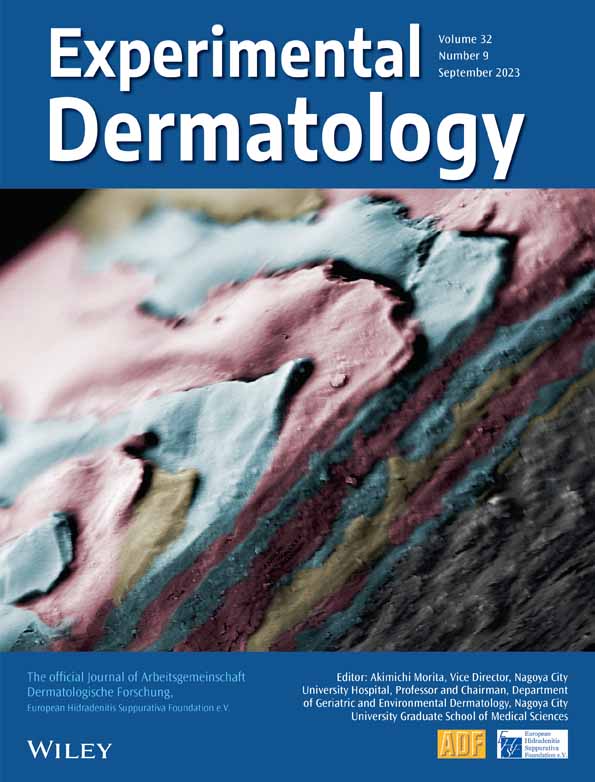Dynamic evaluation of pathological changes in a mouse acne model by optical imaging technology
Abstract
Acne vulgaris is a disorder of the pilosebaceous unit that is primarily caused by hyperseborrhoea, colonization with Propionibacterium acnes, hyperkeratosis and an inflammatory response. Existing pharmacodynamic assessment methods primarily focus on a single causative factor at a certain time point, making it difficult to assess multiple factors simultaneously in real time. Therefore, it is crucial to establish a dynamic and nondestructive method for the assessment of acne in vivo. This study utilized four-dimensional optical imaging techniques to assess the pathogenic factors and pathological progression of acne. LSCI was employed to measure blood flow; TPEF was used to observe inflammatory changes (NAD(P)H) in epidermal granular layer cells and structural changes in collagen fibres in the dermal layer. Additionally, the dermatoscope was used to investigate the micro-characterization of the lesions. We observed that the epidermis in the lesion area was thickened, hair follicles were keratinized, and there was obvious inflammation and blood flow aggregation by optical imaging technology. Based on these findings, the pathological progression of this acne model could be divided into the inflammation phase, accompanied by bacterial colonization, and the reparative phase. These results provide a new perspective for the assessment of acne and offer an experimental basis for the selection of precise drugs for clinical use.
CONFLICT OF INTEREST STATEMENT
The authors declare no conflict of interest to disclose.
Open Research
DATA AVAILABILITY STATEMENT
The data that support the findings of this study are available on request from the corresponding author. The data are not publicly available due to privacy or ethical restrictions.




